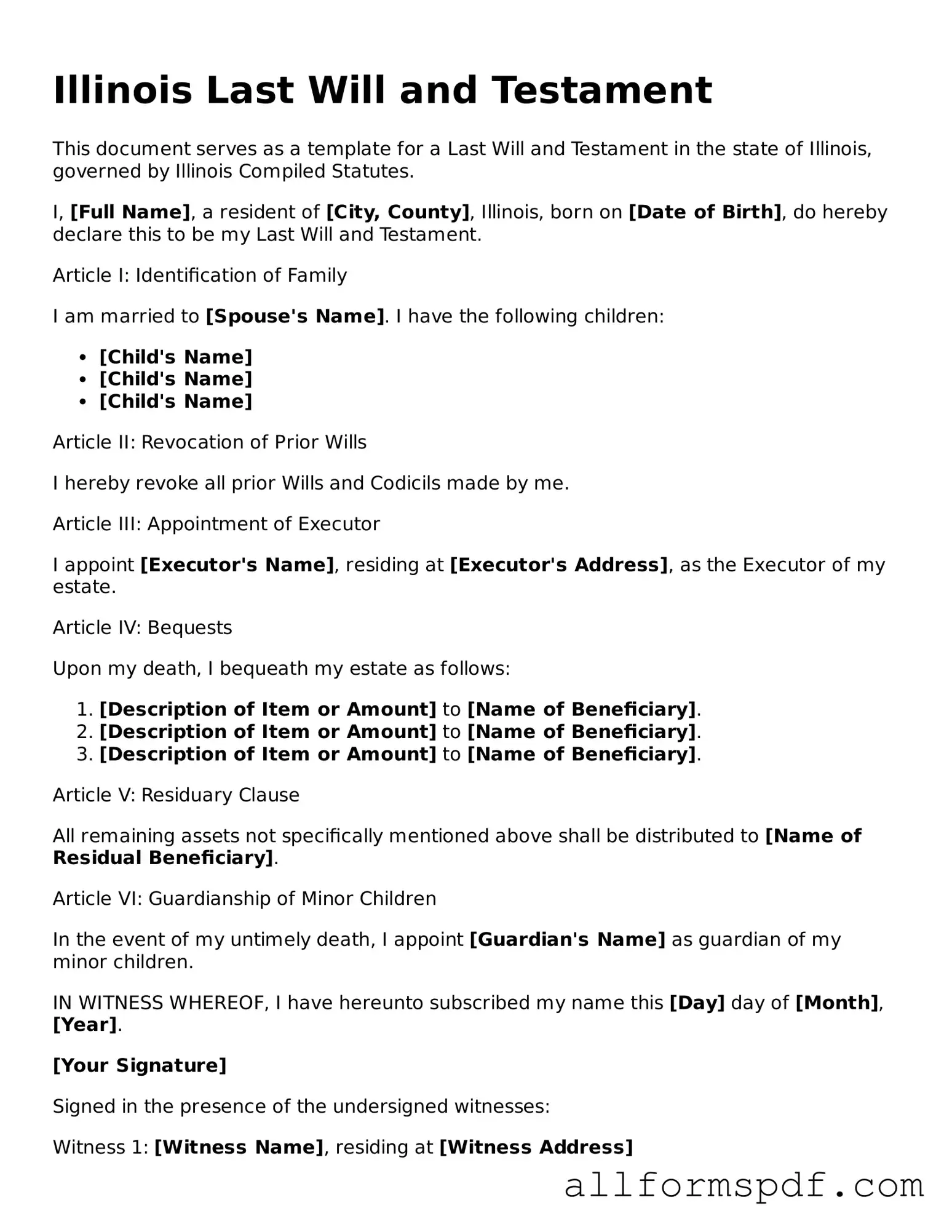Illinois Last Will and Testament - Usage Guidelines
Completing the Illinois Last Will and Testament form is a crucial step in ensuring your wishes are honored after your passing. Properly filling out this document will help clarify your intentions regarding the distribution of your assets. Follow these steps carefully to ensure accuracy and compliance with Illinois law.
- Gather Necessary Information: Collect details about your assets, beneficiaries, and any specific bequests you wish to include.
- Start with Your Personal Information: Fill in your full name, address, and date of birth at the top of the form.
- Declare Your Intent: Clearly state that this document is your Last Will and Testament.
- Identify Beneficiaries: List the names and addresses of individuals or organizations you wish to inherit your assets.
- Specify Bequests: Detail any specific gifts you want to leave to your beneficiaries, including property or monetary amounts.
- Appoint an Executor: Choose a trustworthy person to manage your estate and name them as the executor.
- Include a Residual Clause: Indicate how any remaining assets should be distributed after specific bequests are made.
- Sign the Document: Sign and date the will in the presence of at least two witnesses, who should also sign the document.
- Store Safely: Keep the signed will in a secure location, such as a safe or with a trusted attorney, and inform your executor of its location.
After completing the form, review it carefully to ensure all information is correct. It may be wise to consult with a legal professional to confirm that your will meets all legal requirements in Illinois. Taking these steps will help protect your wishes and provide peace of mind for you and your loved ones.
